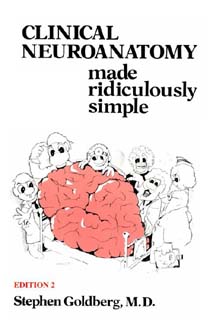The Skeleton
Size 11.90MB
اقتباس:
Book De******ion:
A cutting-edge review of the biochemical, physiological, pharmacological, genetic, and molecular interactions involved in the development and homeostasis of the skeleton. Topics range from chondrogenesis, chondrocytes, and cartilage to skeletal dysmorphology, and include the control of skeletal development, osteoblastic cell differentiation, and bone induction, growth, remodeling, and mineralization. The authors' understanding of bone physiology-and how it is modified throughout all the stages of life-offers novel approaches for improving the endurance of load-bearing implants, achieving life-long optimal bone strength, overcoming microgravity situations (space flight), and hastening the healing of fractures, osteotomies, and antrodeses.From the New England Journal of Medicine, January 13, 2005 Because the structural role of the skeletal system is obvious, and because the hardness of mineralized bone matrix and the prolonged duration of adult bone mass emphasize its solidity, the dynamic and multifunctional nature of the skeleton are not an observer's first impression. With the World Health Organization's Decade of Bone and Joint Disease report and the 2004 U.S. Surgeon General's report on bone health and osteoporosis, we are reminded of the prevalence and cost of postmenopausal osteoporosis and fractures, cancer ****stases to bone, and a host of endocrine and genetic disorders that have a primary impact on cartilage and bone. (Figure) The Skeleton will not guide the clinician in the management of skeletal disorders. Rather, Massaro and Rogers have assembled a series of review articles on selected topics in skeletal biology that will be most useful to researchers seeking an overview of particular topics or to cross-disciplinary practitioners with an interest in bone biology. The topics are selective rather than comprehensive and focus on chondrogenesis and skeletal development, the cellular aspects of bone formation and remodeling, and a narrow range of genetic disorders. The chapters are well referenced through 2002. Figures, for the most part, generally consist of diagrams of interactions rather than primary supportive data, which are useful for an introduction to a topic; however, stained whole skeletons and histologic samples are shown in black and white in some chapters, which limits their usefulness. The book opens with useful sections on chondrogenesis and skeletal development. The roles of N-cadherin and the neural-cell adhesion molecule in the condensation of cartilage and of the Wnt family of glycoproteins (signaling molecules important in embryonic development) in the determination of the fate of cells are outlined. Apoptosis and chondrogenesis are connected, and both are regulated by the signaling of bone morphogenetic proteins (BMPs). Two decades ago, BMPs were mysterious factors in crude bone extracts that, on injection, induced the formation of ectopic bone. Now their signaling pathways through receptors and Smads (proteins that mediate cellular response to transforming growth factor (beta)) have been dissected, and they are being evaluated in clinical trials for their role in enhancing the healing of fractures. BMPs also regulate the tran******ion factor Cbfa1 (core-binding factor), which is required for the differentiation of osteoblasts. The different chapters in the sections on skeletal development have enough overlap to convey information about the intersection of the signaling pathways. Another section deals with the differentiation of the two major cell populations of bone, osteoblasts and osteoclasts. Bone mass depends on the balance between the activities of bone-forming and bone-resorbing cells. Studies have elucidated crucial roles for two BMP-inducible tran******ion factors, Cbfa1 and osterix, in the differentiation of osteoblasts. Knockout mice have been generated to explore these interactions. The drugs used most widely to treat postmenopausal osteoporosis inhibit osteoclast resorption in bone. In fact, differentiation of osteoclasts is influenced by the cytokines produced by osteoblasts. There is an orderly exposition in the book of the tran******ion factors, hormones, and matrix factors that are produced by osteoblasts, stromal cells, and osteoclasts themselves, although it is difficult to get a sense of how all the factors come together in vivo. The section on genetics is the weakest part of the book. There is now a wealth of information in the primary research literature on the genetics of skeletal disorders. Linkage studies have uncovered the genes responsible for numerous disorders, and individual mutations have shed light on gene function. Growth factors and morphogens, as well as the structural components of bone matrix, have been implicated. The table of many of these genes and their associated disorders in the development section of the book includes a useful tabulation of animal models but does not connect the reader to the working principles that have emerged. Several different genes may cause the same disorder, or defects in one gene may be responsible for multiple disorders. Haploinsufficiency generally causes milder conditions than do structural mutations. The reader will not find these concepts fleshed out in this section. The two most common skeletal disorders, osteogenesis imperfecta and Marfan's syndrome, are not covered. The chapters on facial clefting and toxic effects focus narrowly on specific experimental studies and do not establish an overview. A pleasant exception is provided by the chapter on the achondroplastic family of skeletal dysplasias, which presents a well-organized introductory review that covers causative mutations in FGFR3 and their phenotypic correlations, activation of the receptor, and its effects on the growth plate and the various signaling pathways involved. Joan C. Marini, M.D., Ph.D
للتحميل
اضغط هنا
Password=LXS-23043-PDS23-43EWRQ







 رد مع اقتباس
رد مع اقتباس








مواقع النشر (المفضلة)